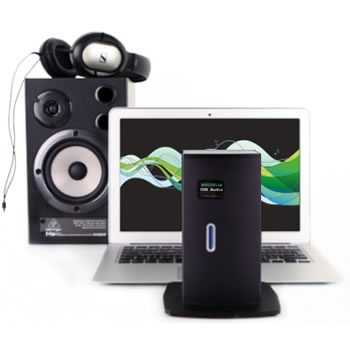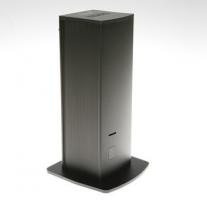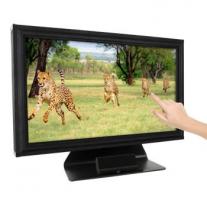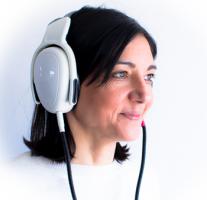Auditory Stimulation / AudioFile Stimulus Processor
AudioFile Stimulus Processor

Questions about AudioFile?
AudioFile is the easiest way to deliver auditory stimuli with synchronous triggers. Designed for scientific applications where the timing and synchronisation of stimulus streams are critical, AudioFile supports real time streaming directly from a host computer and buffered, offline playback of files stored on a high capacity SD card.
Guide Price: £1500
SKU: M0221



Perfect timing
AudioFile is designed for scientific applications where the timing and synchronisation of single and multiple stimulus streams are critical. The device supports two different modes of operation, each of which frees the experimenter from the usual concerns about latency in generating an auditory stimulus:
- Buffered playback of WAV encoded stereo audio files
- Real time streaming of audio directly from the host computer
AudioFile is designed to be used with the Display++, ViSaGe and Bits# systems to provide a complete audio visual stimulus delivery solution for a range of psychophysical, event-related, and neurophysiological investigations. Its open hardware interface and firmware design also supports other stimulator and software systems like NBS Presentation and PST ePrime that can generate trigger pulses and event codes.
AudioFile is also available as part of the BOLDfonic MRI audio delivery package. For a complete audio-visual solution for fMRI, combine BOLDfonic with our BOLDscreen MR Safe LCD displays.
AudioFile has a complete collection of analogue and digital audio outputs. Choose from headphone and line, or optical S/PDIF for connection to a third-party amplifier.

Audiofile mode - the buffered playback solution
Store up to 8 hours of WAV encoded stereo audio files on a 32GB removable SDcard, then trigger the playback of a specific file or a whole playlist using an external stimulator or data acquisition system. Ready-to-run demos are provided for use with the Display++ LCD monitor and Bits# stimulus processor. These use Psychtoolbox-3/MATLAB to show how to generate synchronous visual audio stimulus presentations.
To select the track to play, send AudioFile the track number as an event code (binary marker pattern) to set the status of its TTL-compatible digital input lines. The beginning of all the tracks on the SDcard will already be buffered in the AudioFile SDRAM and the setting the event code marks which track to play next. Detecting the event code and marking which track to play next takes less than 200 microseconds. To start the track, send a single trigger pulse. The stream will start to play almost instantly, within 2 audio samples. AudioFile will set a digital output line high while the track is playing, and low when it ends.
This scheme eliminates variable host operating system delays, providing deterministic timing and no significant latency.
USB Audio mode - for real time streaming
In USB Audio mode, AudioFile operates exactly like a USB soundcard, but with the advantage that you always know precisely when the stream started and stopped.
The mode is designed to support all existing host software applications that play stereo audio, including audio encoded inside movie containers like AVI, MOV and MKV. The audio stream is decoded by the host software application and the bitstream played through AudioFile. The embedded AudioFile digital output interface automatically generates a TTL-compatible trigger at the true onset of the auditory stimulus. When the stream starts, the output trigger line is set high, and when the stream stops the line is set low again.


